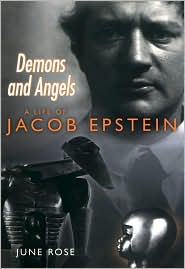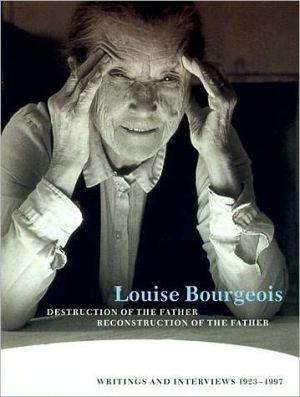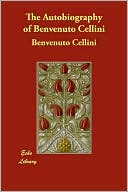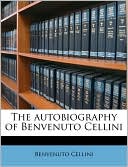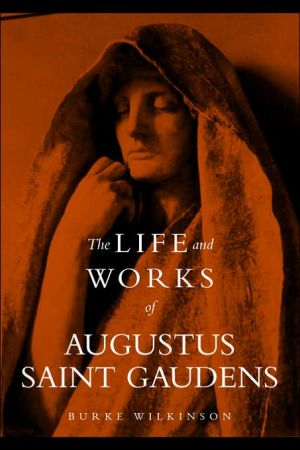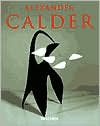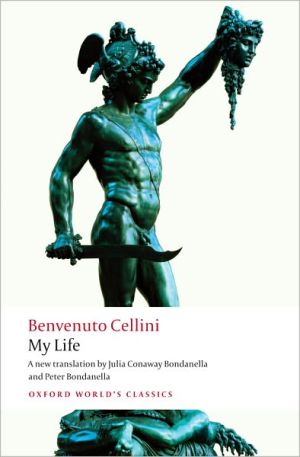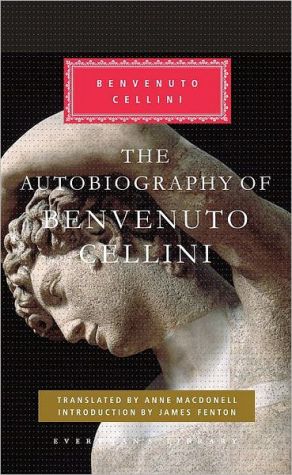Daemons and Angels: A Life of Jacob Epstein
I feel that I can do the best, most profound things and life is short. How I wish I was living in an age when man wanted to raise temples to man or God or the Devil. Jacob Epstein was thirty when he wrote these impassioned words. Now recognized as a seminal figure in the history of twentieth-century art, his powerful and often explicit sculptures, monumental in scale, were hailed as the work of a genius by a few contemporary figures such as Ezra Pound and Augustus John, but produced hostility...
Search in google:
“I feel that I can do the best, most profound things and life is short. How I wish I was living in an age when man wanted to raise temples to man or God or the Devil.” Jacob Epstein was thirty when he wrote these impassioned words. Now recognized as a seminal figure in the history of twentieth-century art, his powerful and often explicit sculptures, monumental in scale, were hailed as the work of a genius by a few contemporary figures such as Ezra Pound and Augustus John, but produced hostility and censoriousness from the art establishment. His is a true rags-to-riches story. Epstein was born in 1880 in the Jewish Ghetto of New York but emigrated to Europe to live a bohemian life, with a wife and several mistresses in a domestic menage. By the time of his death in 1959 he had met almost everybody of importance in the art world and many in political and other spheres. He endured public scandals caused by the nudity of his so-called Strand Statues (1907-1908; destroyed 1937) and the debauched-looking angel on his 1912 memorial for Oscar Wilde, but in 1946 he modeled the portrait of Sir Winston Churchill and was himself knighted in 1954. It is a comment on changing tastes that Epstein’s magnificent carving in alabaster, “Jacob and the Angel,” once refused by the Tate Gallery, now stands in the Central Sculpture Hall of Tate Britain. His sculpture, drawing, and other work are to be found in museums and art galleries all over the world. Daemons and Angels, the first biography in fifty years of this controversial sculptor, features black-and-white photographs throughout.Library JournalLike many artists, the sculptor Jacob Epstein (1880-1959) was a potpourri of contradictions. Born in America, he lived most of his adult life in England. He was reviled in the popular press for his controversial early work (such as the debauched angel created to adorn the Paris tomb of Oscar Wilde), but he was knighted in 1954, near the end of his life. Finally, though he was born and raised Jewish, he created some of the most powerful Christian imagery of the 20th century. The author of a number of biographies, including one on Epstein's contemporary and friend Amedeo Modigliani (Modigliani: The Pure Bohemian), Rose has compiled a solid and often compelling work that strikes an excellent balance between the artist's work and his tempestuous and confusing personal life (a truly bohemian stew of wives, mistresses, models, children, and dogs). Though Epstein had created portraits throughout his career, in his later years he became the sculptor of choice for many of the world's most famous names. Among those who sat for him at the height of his popularity were writers T.S. Eliot and W. Somerset Maugham, Winston Churchill, India's Prime Minister Nehru, and the actress Gina Lollobrigida. Rose provides insightful commentary on the relationships between Epstein and his varied clients. Highly recommended for larger collections of 20th-century art. Martin R. Kalfatovic, Smithsonian Institution Libs., Washington, DC Copyright 2002 Cahners Business Information.
Demons and Angels\ A Life of JACOB EPSTEIN\ \ By JUNE ROSE\ CARROLL & GRAF PUBLISHERS\ \ Copyright © 2002 June Rose.\ All rights reserved.\ ISBN: 0-7867-1000-4\ \ \ The Ghetto\ Jacob Epstein's childhood in the Jewish ghetto of New York was a lonely and suffocating existence, yet the ghetto haunted his dreams. He was born into a family of Jewish traders from Augustow in Russian Poland on 10 November 1880. By the time Jacob was born, his parents had lived in the USA for fifteen years and were adjusting well to their new life. Max Epstein, his father, was a relatively well-to-do and devout member of the Jewish community; an important local figure, he had contributed most of the money to build a neighbourhood synagogue.\ He had married well: Mary Solomon Epstein, from the same home-town, came from a family of mill-owners who had emigrated to America in 1865. Max ran a bakery and bagel business and had begun to buy up tenements in the poor, depressed neighbourhood where they lived. They were not the poverty-stricken immigrants of Hollywood legend. Jacob remembered the two Polish Christian servant girls who worked for them, who wore kerchiefs and went about the house barefoot.\ Max Epstein owned the tenement building at 102 Hester Street and let out rooms to immigrants who arrived at the nearby docks. He was the first person to install a bathroom in their street, and the kind-hearted Mary allowed their lodgers to take a weekly bath, much to her husband's annoyance. Mary bore twelvechildren, but only eight survived, five boys and three girls; Jacob was the third eldest. Family life was punctuated by prayers morning and evening, and by Bible readings in Yiddish at home and, for the boys, daily lessons in Hebrew from a visiting rabbi.\ Even as a small boy of five, Jacob went to synagogue with his father and his elder brother Louis. He came to dread Saturdays, when he had to attend the services for practically the whole day. Both sets of grandparents lived near by, and in the evening hordes of relatives and their children, dressed in their Sabbath best, came to visit. Max wanted to move uptown to a better district, to educate his sons to become solid businessmen or members of the respectable professions, the law or medicine, and his daughters to marry well. He succeeded for the most part: one of his sons became a doctor; another ran a grocery store. Only Jacob remained outside the orbit of the `old tyrant'.\ Perhaps it was his illness at the age of six which set him apart. He suffered from pleurisy, and for almost two years he remembered being carried about a great deal and no doubt spoiled. The family called him `the sick one'. He began to shrink from family gatherings, to live in the world of the imagination, drawing whenever he could and reading voraciously. As a grown man he could not remember a time when he did not draw. He soon grew strong and delighted in roaming the city of New York before the skyscrapers dominated the skyline, crossing the great Brooklyn Bridge and watching the bay with its constant traffic of steamers and ferry-boats. From his home in Hester Street he looked down on a teeming crush of people in the open-air market crammed with push-carts and peddlers selling fruit, herrings, horseradish, books and cheeses. The people nicknamed Hester Street `the pig market': pork was the one thing not to be found in the Orthodox surroundings. Shops or sweatshops made up the ground floor of most of the buildings; signs in Yiddish, Hebrew and English advertized hats, frocks and boots, while kettles, pots and pans hung in the ground-floor windows.\ Russians, Poles, Italians, Greek and Chinese came hunting for bargains in Hester Street, and Jacob stared fascinated at the `unique and crowded humanity' on his doorstep. He began to explore and play on the roofs where all the East Side boys flew kites; he was particularly drawn to the docks. To reach the Hudson river on the West Side of the docks, the boys from the Jewish quarter had to pass through the Irish quarter. That meant fighting their way through, and Epstein learned early on how to defend himself and to use his elbows. He would brave the Irish quarter regularly to get to the open-air seawater baths and remained a keen swimmer all his life.\ Often his wanderings kept him out late so that he missed meals at home and risked his father's wrath. He attended a free public school in the area, PS7, but concentrated on literature and history, which he loved. According to his own account, when he should have been studying grammar or mathematics he was allowed to spend lessons drawing in his exercise books. The teachers were so proud of the young prodigy that they permitted him to follow his bent.\ Young Jacob revelled in the variety and vitality of the people of the streets but at home he was forced to study the Bible and to behave like a pious youth in Poland. He felt American but his parents spoke Yiddish in the house, although they had both learned English. At night the boy would lie awake listening to his father reading a florid romance in Yiddish to his wife, but it was the Saturdays that he could not stand. In the synagogue, where the men and women sat separately, he was achingly bored with the `wailing prayers' and longed to make some excuse to escape.\ In 1886, when Jacob was six years old, a handful of idealistic young college graduates moved to the lower East Side of New York City, to live among the ghetto children, take them to the museums, the parks and the countryside, where they learned that `apples came from trees not pushcarts'. For boys like Jacob to have friendly neighbours, not teachers or preachers, inviting them into a house with pictures on the wall and secular books on the shelves, offered a tempting glimpse of a wider world. The Settlement House Movement aimed to improve the neighbourhood, offer practical help and give the newcomers an awareness of America while respecting their own culture and religion. Jacob Riis, in his book about the immigrant problem at the time, commented, `If ever there was material for citizenship, the Jew is such material. He is the yeast of any slum. I for one am a firm believer in the Jew and his boy ... Ignorant they may be but with a thirst for knowledge that surmounts any barrier ... the boy takes all the prizes in school.'\ The Settlement House Movement and the complex educational and social reform programmes associated with it, many of them sponsored by Jewish charities, freed the immigrant children from their narrow horizons, bounded by home, synagogue and the streets in between. The children `adored' their youth leaders. One young contemporary of Jacob saw the contact with the Christian reformers as liberating him from the sense of ethnic and religious isolation inculcated by Hebrew teachers and parents. Once freed from the strictures of a closed orthodoxy, they were soon in touch with the vigorous Yiddish culture of the intelligentsia of Polish Jewry: writers, journalists and socialists, nearly all of them non-Orthodox.\ Young Jacob, moody, artistic, sitting drawing by a poor light at the kitchen table when he should have been studying, had a longing to escape. His talent helped to free him when he won a prize for art from the Cooper Union School at the age of eleven. With the encouragement of his art teacher Epstein began to dream of a future as an artist. In writing about his early life, Epstein skims over the painful period when he was living at home, struggling to find his way: he loathed the feeling of dependence all his life. The important role the leaders of the Settlement House Movement played in the artist's development, by supporting him both morally and, to a significant extent, financially in his student years, has come to light only recently, from his letters and other documents.\ He probably attended classes and talks at the nearby Neighborhood Guild (later renamed the University Settlement) while he was still at school. He was certainly befriended by at least two of the Guild's workers. They were mostly male graduates in their late twenties and thirties from professional families with leftwing tendencies. Miss Helen Moore from Iowa was an exception: she had studied literature and, more significantly, painting under Thomas Eakins; on her own initiative she opened the first library for children (five cents a loan) in the USA.\ The other Neighborhood Guild worker who encouraged Jacob was James Kirk Paulding, a literary man in his late twenties and a graduate of Harvard, Leipzig and Berlin. Paulding read aloud to a small group of immigrant boys on Sunday mornings. The selection of readings, which included works by Emerson, Spinoza and Mazzini, reflected the youth leaders' sympathies: Jacob remembered heating Conrad's Typhoon and The Nigger of the Narcissus as well as most of Turgenev. The readings were sometimes held at the Education Alliance (formerly the Hebrew Guild), a Jewish-sponsored community centre with English classes for immigrants, drama and literary societies, a People's Synagogue and an impressive free (adult) lending library which was a part of the New York public library system.\ Epstein mentions James Kirk Paulding in his autobiography, although the personal letters that survive from him are mainly to Helen Moore. One such, dated 12 July but without a year, was written while he was on holiday with a dozen other boys celebrating America's Independence Day at the Settlement summer camp at Lake Greenwood, New Jersey. Miss Moore had presented the boys with an American flag for the occasion, and a wealthy philanthropist, Mrs Stuyvesant Fish, one of the New York hostesses who patronised the Settlement House Movement, sent a cheque to Jacob, the leader, to buy cream for their 4 July dinner. Jacob dutifully wrote to thank Mrs Fish, but apparently his letter had gone astray. `I directed my letter to Tuxedo, NY, and if you will write to Mrs Fish and tell her ... I will be very glad,' he wrote. `Tell Mrs Fish that although we were too late for cream yet we had many other good things. The boys are all thankful to her ... Bernard [almost certainly Bernard Gussow, who was a particular friend of Jacob's] and I and all the boys send our love to you and to Mrs Moore.' He ended with a hint of the charm which later endeared him to women. `Miss Moore, this I believe, is the first time I've written to you. Do you know out here I am rather glad of this opportunity of writing and feel happy when I send this off? Jake Epstein.'\ To Mrs Fish, after thanking her for the money for cream, he wrote a graphic account of the new Americans at camp:\ We celebrated yesterday the 4th. Going into the forest we cut down a tall and slim ash, after taking of [sic] the bark had a beautiful flag-staff. This we raised on a mound facing the lake in front of the tents and at about ten o'clock read the declaration and raised a beautiful new American flag which Miss Moore had presented us. We then sang the `Star-Spangled Banner'. We had truly a glorious fourth and considerable [sic] with which to enjoy ourselves. Bathing, swimming is best. I wish you could have been here this splendid Independence Day and seen the flag-raising ceremonies and the fun ... Out here I paint and try to represent the many things that I see. All is different from the city. All is colour and cloud and atmosphere, green and blue. Yet it is the life here also, the country-life that I see, I would also get into my painting. I go out for long rambles.\ Mrs Stuyvesant Fish was obviously very taken with the talented and good-looking Jacob Epstein, regularly sending an open carriage with a footman to fetch him and his drawings from his tenement in the slums to her fashionable uptown house. At tea parties she introduced the boy to her smart friends and persuaded them to buy his sketches, as she did herself. According to a family story she had lost a son and wanted to adopt Jacob. She even sent a letter to Max Epstein with the proposition that she should adopt Jacob, since she could offer him so many more advantages and help to further his career. Max, who was a proud man and, by his own standards, not poor, was furious. He blamed Jacob, although the boy knew nothing of the idea. In time, Jacob grew tired of Mrs Fish's patronage, but Miss Moore's friendship was to remain important to him.\ In another undated letter from the summer camp Jacob told Miss Moore that he had been home to Hester Street for a week and was `glad to see my dear mother and brothers and my dear sisters once again'. The absence of any mention of his father in the letter speaks volumes.\ The first time that Jacob's activities can be dated for certain is, curiously enough, the year of his bar mitzvah, which was held in the synagogue his father had helped to build. He must have learned enough Scripture and Hebrew to read a passage from the Bible aloud to the congregation. He was just thirteen at the time, in November 1893. `How I ever got through this trying ordeal I cannot now imagine,' he wrote.\ Up until that age Jacob had to conform, outwardly at least, to the demands of a strict regime. But he was a youth who could not tolerate authority and he was growing up, growing away from his family. `The New York ghetto was a city at that time transplanted from Poland,' Epstein recalled, and he was fast absorbing American culture. The clash in the family was always between Jacob and his father. He disliked his paternal grandmother, `a cantankerous old creature' who swore that her grandchildren were losing their Jewish heritage in America and becoming irreligious; she spent her old age travelling between New York and Poland. She did not want to die in a pagan country. But he was fond of his mother and loved her parents. He wrote with feeling of Friday evenings when the old couple would take the children's heads in their hands, give them their blessing in front of the Sabbath candles and reward them with fruits and sweets. He remembered their kindness and patriarchal simplicity with great affection. Although he dropped all ceremonial forms of religion as soon as he could, the Old Testament stories drummed into him at Hebrew classes and in synagogue haunted his imagination all his life.\ Soon after his thirteenth birthday, Jacob, encouraged no doubt by the friends who had recognized his talent, registered at the Art Students' League. The League, founded in 1875 by a group of artists, had moved the year before to a building on West 57th Street, where it still stands. To this day there is no entrance examination and students are not required to have had any previous formal training in art. The term began in February 1894 and marked Jacob's first steps in his real life.\ Max Epstein did not actively discourage his son. He recognised that the boy had a gift for drawing, but to him the yearning to be an artist remained a mystery. He thought the boy was meshugga (mad) and could not understand why he wanted to study a subject which could not possibly earn him any money.\ As an art student Jacob inevitably became more independent and increasingly estranged from his father. In his teens he began to frequent anarchist and black American circles, anathema to the inward-looking world of his parents. He knew `Red Emma' Goldman and made a drawing of her. When she came to visit Jacob at home during the Passover holidays to invite him to a meeting, Max Epstein, furious at the invasion of his home by a woman who mixed with non-Jews and dangerous politicos, shouted at her in Yiddish, `Get out of my house, you tramp!'\ Jacob could not be contained. He loved to wander down the Bowery, a street made up of a long line of saloons, crowded by night with visitors to New York, sailors and prostitutes. One saloon filled with photographs of famous boxers, its floor inlaid with silver dollars, particularly intrigued him. The Bowery led to Chinatown, and Epstein peered into Chinese shop windows and even wandered into a Chinese temple, but he could never persuade the inmates to allow him to sketch them; they would slip away into their houses as soon as they were aware of being watched. His visual senses were constantly stimulated by the city. But he also loved to escape the press of people.\ (Continues...)\ \ \ Excerpted from Demons and Angels by JUNE ROSE. Copyright © 2002 by June Rose. Excerpted by permission. All rights reserved. No part of this excerpt may be reproduced or reprinted without permission in writing from the publisher.\ \
\ Library JournalLike many artists, the sculptor Jacob Epstein (1880-1959) was a potpourri of contradictions. Born in America, he lived most of his adult life in England. He was reviled in the popular press for his controversial early work (such as the debauched angel created to adorn the Paris tomb of Oscar Wilde), but he was knighted in 1954, near the end of his life. Finally, though he was born and raised Jewish, he created some of the most powerful Christian imagery of the 20th century. The author of a number of biographies, including one on Epstein's contemporary and friend Amedeo Modigliani (Modigliani: The Pure Bohemian), Rose has compiled a solid and often compelling work that strikes an excellent balance between the artist's work and his tempestuous and confusing personal life (a truly bohemian stew of wives, mistresses, models, children, and dogs). Though Epstein had created portraits throughout his career, in his later years he became the sculptor of choice for many of the world's most famous names. Among those who sat for him at the height of his popularity were writers T.S. Eliot and W. Somerset Maugham, Winston Churchill, India's Prime Minister Nehru, and the actress Gina Lollobrigida. Rose provides insightful commentary on the relationships between Epstein and his varied clients. Highly recommended for larger collections of 20th-century art. Martin R. Kalfatovic, Smithsonian Institution Libs., Washington, DC Copyright 2002 Cahners Business Information.\ \ \ \ \ Kirkus ReviewsServiceable biography of the American expatriate sculptor who shocked English society in the early 1900s and eventually was knighted for his troubles. Born into a family of Russian-Jewish immigrants in 1880, Jacob Epstein came to be a familiar figure in the fin-de-siècle New York demimonde of prostitutes, musicians, and hard drinkers, among whom he found inspiration for his early sketches. He was also drawn to anarchism, attending speeches by the likes of Peter Kropotkin and Emma Goldman, though he kept himself from practical politics. “My loyalties,” he remembered, “were for the practice of art and I have always grudged the time that is given to anything but that.” In rather slack prose, English biographer Rose (Suzanne Valadon, 1999, etc.) traces Epstein’s evolution as both artist and freethinking bohemian, following him into self-imposed exile in London, where he fell in with T.E. Hulme, Ezra Pound, and other exponents of modernism and undertook his first major sculptures. One monumental group of statues, set along the Strand, earned him a controversial place in London society. Depicting unheroic nudes, the Strand Statues were instantly decried as being injurious to public morals, a charge that accompanied the release of many of Epstein’s later pieces. Rose suggests this charge had its origins in anti-Semitism more than in any developed theory of aesthetics. Nor was Epstein an ingratiating personality: “. . . he was not a man’s man . . . he had no small talk and no interests outside the arts. He was also argumentative, didactic and incapable of disguising his disdain for anyone who did not share his priorities.” Even so, he came to be influential, eventually earning commissions forbusts of Winston Churchill and Princess Margaret, among others, while gaining public acceptance for a remarkable body of work, much of it based on biblical themes and “the struggle of human life—sexual love, pregnancy, maternal love, death.” Draws deserved attention to an artist often overlooked in standard surveys of the early-modern period.\ \
